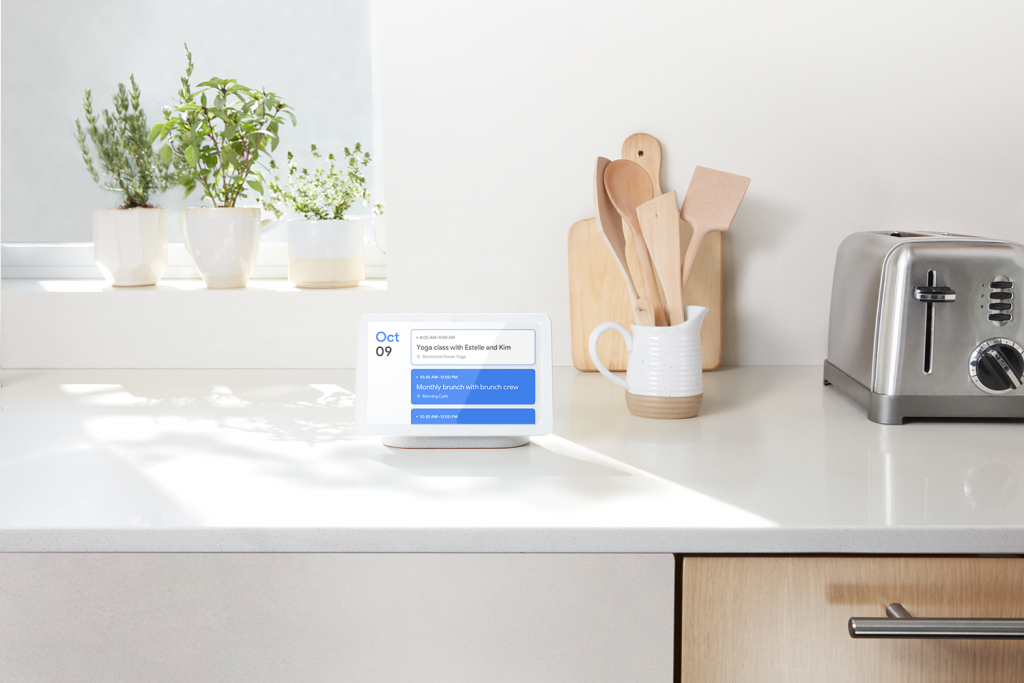Google’s Upgraded Suite is Home Technology at its Most Seamless
We discuss today’s releases with Ivy Ross and Isabelle Olsson

At the 2018 “Made by Google” event, Google gave the world an official look at the roster of products they’ve been working on—solidifying the rumors spurred by leaks. The Google Pixel 3 and 3 XL ($799 and $899), Home Hub ($149), Pixel Slate ($599), Pixelbook 2 ($999), Pixel Stand ($79), Pixel Buds 2 ($159) and an updated Chromecast Ultra ($69) were all unveiled—broadening, and upgrading, Google’s umbrella of consumer-oriented products.
Almost all of these products are updates and developments on existing wares and not new releases. But, as Google aims to further progress as a viable counter option to other, more popular devices, the upgrades matter. The slew of products released work seamlessly together. And the technology works with you as you move from office to home to anywhere else.
![]()
The rounded, natural design of Google’s suite is purposeful. The subtlety, spearheaded by Ivy Ross (Vice President of Design for Hardware Products) and Isabelle Olsson (Design Director for Home and Wearables), is the best way to bring expansive tech products into daily life. Across the board, all of the releases signify a new chapter in their technology—taking another step into the home by offering products that communicate with your space and allow the components around it to respond; features like AI-handled call screening, Google’s new Nest apps and the duality of products like the Slate and the Pixel are proof of this.
“Creativity is seeing everything that’s going on in the world and filtering it and having a point of view about it. So it’s finding the balance between having a point of view, but then being willing, within a range, to hear feedback,” Ross continues. “I think I get into the mindset of the consumer. I think we have to do what’s right for each person.”
“We want to create things that a lot of people are going to like. So it’s finding that right design that has mass appeal, while still being opinionated and on brand,” Olsson says.
![]()
The moments spent off your devices are equally as important, the design team realized; digital well-being comes at the forefront of every device and innovation. The Pixel 3 and 3 XL, which operate seamlessly with Google’s at-home devices, both have upgraded displays and speakers—as well as dual front-facing cameras for 184% more coverage in selfie shots. The camera on the back gets an upgrade, too. Features like Top Shot (which photo-bursts and allows AI to recommend the shot that looks best), Super Res Zoom (which allows for zoom without pixelated results) and Night Sight (which renders flash useless by automatically adjusting levels to bring nighttime photos to life) make this camera the most advanced on any smart phone. And, Google is allowing for free unlimited photo storage at the photo’s original resolution.

These photos can then find their home wherever you choose to set up your Home Hub. The Home Hub comes in four signature colors—each color created by Google exclusively for their collection of home-oriented products. The Hub is compact but far-reaching. Its 7″ display is large enough to see from across the room, and the device’s microphone can pick up your voice from further than ever. And it’ll recognize yours, too. When you wake, simply say “Good Morning” and it’ll provide you with weather and traffic updates, a to-do list and the option of controlling any of your other smart-home products.
“The best tech graduates eventually into being something that we just consider as part of our lives, like a great chair,” Olsson says.
“I think people are craving this sensorial, tactical nature. Because we are on screens, which are slick, and when we are not on a screen the rest of the product—because it’s sitting in our home—should blend in. So we do go to great lengths to custom make all of that fabric,” Ross says. The products are meant to exist, without obtrusion, wherever they’re placed.

If your Hub is anchored to your kitchen (where apps like Tasty make home-cooking easier) then the Pixel Stand, which wirelessly charges your Pixel through cases, stands it upright to act as a personal assistant. It also adjusts to your distance to be easier to be read and slowly brightens when used as an alarm.
“Everything is thoughtful and considered,” Ross says. “We have possibilities in our mind that the consumer doesn’t. The consumer knows what they know today. So, it’s not ignoring the customer, but it’s getting into their mindset and taking them with you on the journey—and always staying with them but a few steps ahead.”
Images courtesy of Google












